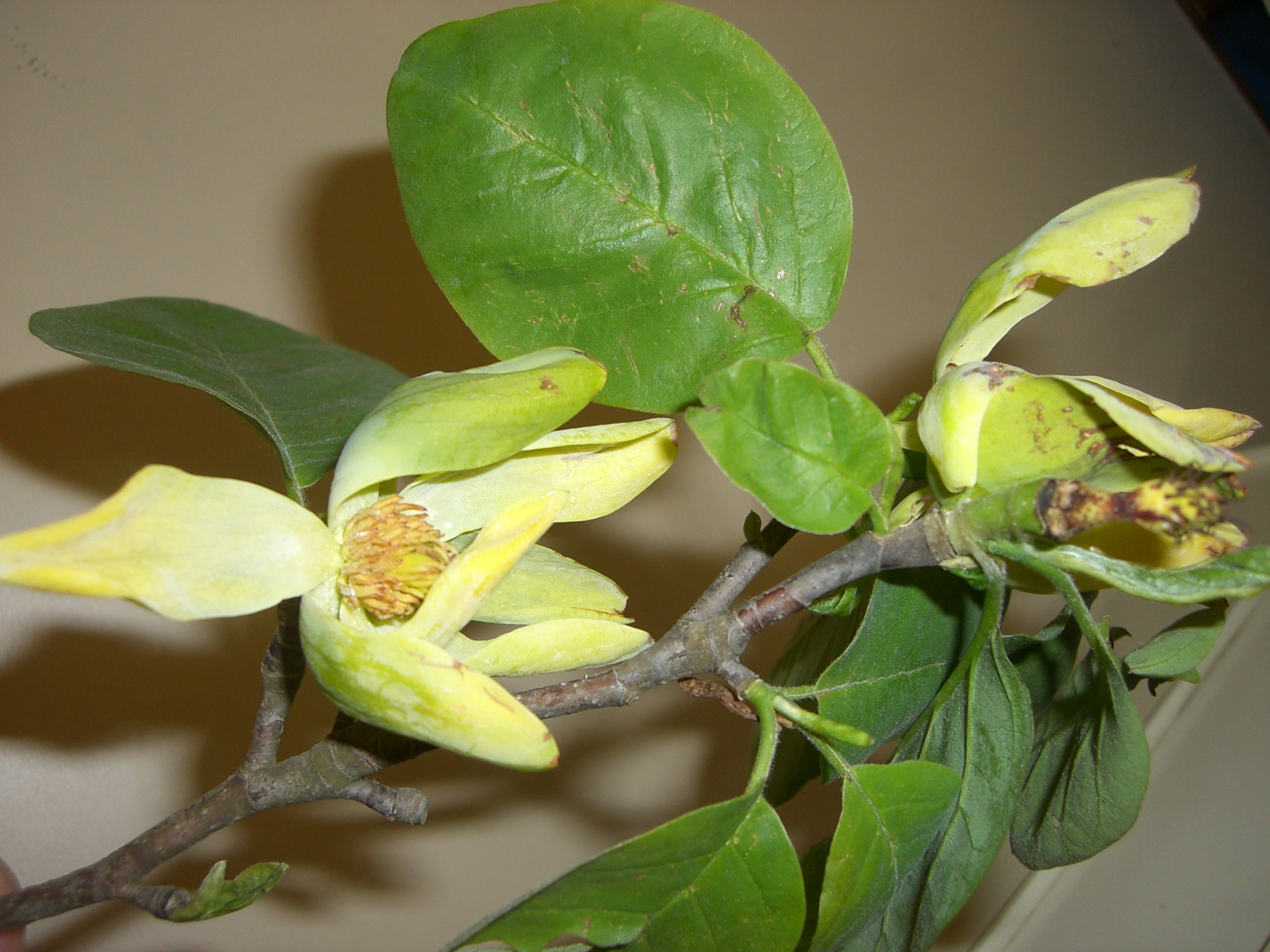
Evergreen or deciduous trees or shrubs. Buds with large stipules that at first enclose the growing tip, but soon shed to leave ring-like scars on the branchlets. Leaves alternate, simple (rarely lobed), stalked. Flowers mostly bisexual, often showy, solitary when terminal, occasionally paired when axillary, often stalked. Sepals and petals free, generally similar although the outer segments are sometimes sepal-like. Stamens numerous, free, spirally arranged, filaments thick. Carpels generally free, several to many and spirally arranged, sometimes on a common stalk (gynophore). Fruit a cluster of follicles (winged samaras in Liriodendron), generally in a cone-like structure but variable.
A family displaying many characters that are assumed to have been present in the earliest flowering plants (e.g. flower parts free, similar in appearance and sometimes intergrading, spirally arranged, white, beetle pollinated) and often quoted as an example of the kind of plants that featured in the early evolution of the flowering plants. Closely related in floral structure to other 'primitive' families such as the Winteraceae and Annonaceae.
The genus Manglietia, occasionally stocked in specialist nurseries, is sometimes included with Magnolia but differs in having 4 or more ovules per carpel while Magnolia has only 1-2 ovules and seeds per carpel.
Liriodendron and some magnolias are used for their timber; some magnolias are used in perfumery and cosmetics.
Generally distinctive white (rarely yellowish) or pink to purple showy flowers; stipules at growing tips soon shed to leave scars encircling the nodes.
7-8 genera with about 200 species from the temperate and subtropical northern hemisphere. In Asia extending from the Himalaya to Japan, Malay Archipelago, New Guinea and near islands. In America from the temperate south-east of the United States through the tropics to S Brazil. All genera are represented in Asia and America, showing a marked discontinuous distribution. However, the fossil record shows that the family was once much more widely distributed across the northern hemisphere.
Liao (1972), Spongberg (1976), Chen Bao Liang & Nooteboom (1993).
Source: (1997). Magnoliaceae. In: . Horticultural Flora of South-eastern Australia. Volume 2. Flowering plants. Dicotyledons. Part 1. The identification of garden and cultivated plants. University of New South Wales Press.
